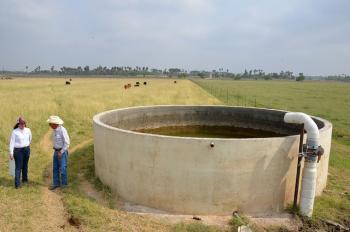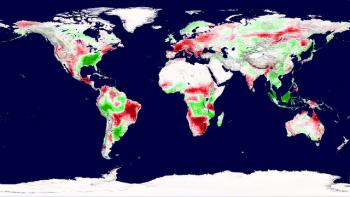Water shortages are coming. It's time for us to act.
PhD, Conflict Analysis and Resolution, George Mason University
M.A, Conflict Transformation & Peacebuilding, Eastern Mennonite University
|
|
 Most Americans take water for granted. It’s a resource that people assume will always be accessible, available, and consumable. For most people in this country, whether they’re at a public drinking fountain, a restaurant or at home, water is a commodity considered to be at our constant beck and call – but for how much longer?
Most Americans take water for granted. It’s a resource that people assume will always be accessible, available, and consumable. For most people in this country, whether they’re at a public drinking fountain, a restaurant or at home, water is a commodity considered to be at our constant beck and call – but for how much longer?
America’s water supply is in crisis and, if we don’t act now, we face an imperiled future. The latest news last week, that California faces its fourth year of drought, illustrates this point powerfully. California is witnessing year-on-year drought conditions with decreasing precipitation and increasing heat. This is a potential death knell for fisheries, the agricultural industry, and municipal water supplies. Other states may soon face similar conditions.
America is entering a new phase of “peak water”, the point at which freshwater is being consumed faster than it is replenished. Already, 40 state water managers expect water shortages to occur in their states over the next 10 years.
Nearly one in 10 watersheds, an area of land where water drains into one place, are stressed by the impact of arid conditions. Over 80% of continental US is abnormally dry and, with 2014 going down as the hottest year on record, we can expect even drier conditions to become more common.
These are serious problems for America, which has the highest per capita water use in the world. With a growing population consuming trillions of gallons of fresh water every year across our 160,000 public water systems, our lives, our economies, and our industries are dependent on our water supply. Anything that undermines this delicate balance will destabilize our communities and our economies quickly. The water wars being waged in the Southeast – as Florida, Georgia, and Alabama fight over watersheds and water flows – are a prime example.
 Expect more of this.
Expect more of this.
While water managers might be focused on upgrading our dilapidated water infrastructure (American Society of Civil Engineers gave it a D), which will cost several trillion dollars in repairs over the next 20 years, we need to make sure there’s water to flow through that infrastructure.
Many states and federal agencies are preparing to deal with future water scarcity, especially as demand for water is estimated to grow by more than 40% over the next 35 years. States are assessing current water reserves, developing drought preparedness plans, and taking conservation actions. Federal agencies have executed many of the same actions, in addition to supporting state water management efforts. But more is needed.
The Government Accountability Office (GAO) found that increased collaboration between federal, state, and local water authorities would strengthen state water management activities. At the moment, progress is hindered by too many inputs from, and a lack of coordination between, these various bodies.
We should take heed.
The Cartwright Peak Water Resolution has been introduced in the House of Representatives in response to the GAO report. It calls for prioritizing the National Water Availability and Use Assessment program, provisioned in the Secure Water Act, with the same sense of urgency that characterized our mission to put a man on the moon.
In order to facilitate collaboration between federal and state authorities, we must collect and provide the most current information on water availability and use as possible, and we must do so now. The possibility that we are approaching the point of peak water is real and demands quick action.
We cannot overstate the urgency of this task. Ensuring that our children have access to the same abundance of water that our country has enjoyed throughout its history is our responsibility. The time to do so is now, before another devastating drought descends on America.
###
Photo #1: Texas Drought. Source: U.S. Department of Agriculture on Flikr.
Photo #2: Drought Drives Decade-Long Decline in Plant Growth. Source: NASA Goddard Space Flight Center on Flikr.
This material is presented as the original analysis of analysts at S-CAR and is distributed without profit and for educational purposes. Attribution to the copyright holder is provided whenever available as is a link to the original source. Reproduction of copyrighted material is subject to the requirements of the copyright owner. Visit the original source of this material to determine restrictions before reproducing it. To request the alteration or removal of this material please email [email protected].
rosters
IMPORTANT LINKS
- Home
- Admissions
- Academics
- Research & Practice
- Center for Peacemaking Practice
- Center for the Study of Gender and Conflict
- Center for the Study of Narrative and Conflict Resolution
- Center for World Religions, Diplomacy, and Conflict Resolution
- Indonesia - U.S. Youth Leadership Program
- Dialogue and Difference
- Insight Conflict Resolution Program
- Parents of the Field Project
- Program on History, Memory, and Conflict
- Project on Contentious Politics
- Sudan Task Group
- Undergraduate Experiential Learning Project
- Zones of Peace Survey
- News & Events
- Student and Career Services
- Alumni
- Giving




